NIL
2026 NCAA Tournament Predictions: Way-too-early Bracketology projections for 68, 72, 76-team fields
After the final set of NBA Draft withdrawals became official, the picture of college basketball’s 2025-26 season became much more clear. With NIL drawing a large amount of talent back for an extra season, the top of this season’s bracketology contenders could be loaded. The NCAA uses the NET Rankings – an analytic algorithm which ranks every […]

After the final set of NBA Draft withdrawals became official, the picture of college basketball’s 2025-26 season became much more clear. With NIL drawing a large amount of talent back for an extra season, the top of this season’s bracketology contenders could be loaded.
The NCAA uses the NET Rankings – an analytic algorithm which ranks every team in college basketball by splitting wins and losses into four categories (known as quadrants) – to help the selection committee build the 68-or-more-team bracket in March. In the absence of those numbers for next season, bracketology must rely on preseason projections of how each team will perform with their incoming transfers and recruits.
Another wrinkle in the offseason is the NCAA’s pursuit of tournament expansion, with 68, 72 and 76-team formats all on the table in 2026. Here is a way-too-early look at the 2026 NCAA Tournament field based on what we know.
Bracketology
Projected 1-line: Purdue, Houston, Duke, Florida
Last four byes: Iowa, Clemson, St. Mary’s, Oregon
In if Field of 68: Vanderbilt, Virginia, USC, Kansas State
In if Field of 72: LSU, Maryland, Cincinnati, Miami
In if Field of 76: Georgia, Butler, SMU, Ohio State
First Four (Dayton)
16 Norfolk State (MEAC) vs. 16 Southern (SWAC)
16 CCSU (NEC) vs. 16 Merrimack (MAAC)
11 Vanderbilt vs. 11 USC
11 Virginia vs. 11 Kansas State
Midwest (Chicago)
St. Louis
1 Purdue (Big Ten) vs. 16 CCSU/Merrimack
8 Gonzaga (WCC) vs. 9 Ole Miss
Portland
5 Arizona vs. 12 Yale (Ivy)
4 UConn vs. 13 Akron (MAC)
Philadelphia
6 Wisconsin vs. 11 Virginia/Kansas State
3 Tennessee vs. 14 McNeese (Southland)
Buffalo
7 Texas A&M vs. 10 Clemson
2 St. John’s (Big East) vs. 15 Vermont (AEC)
1-seed Purdue
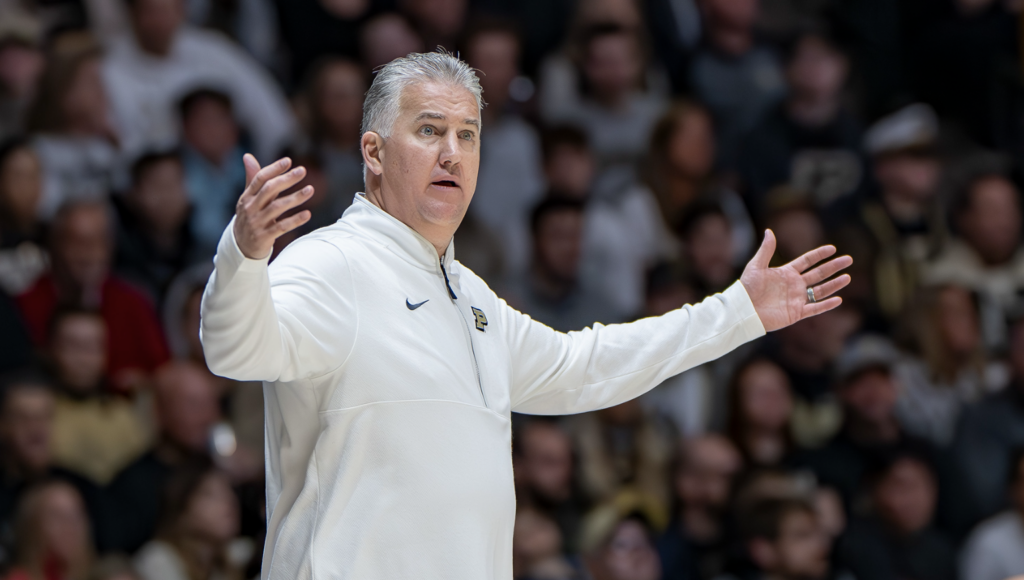
Purdue again brings back a wealth of returning talent, including multiple All-Big Ten selections from the past season. Head coach Matt Painter complements what he had with a pair of big-time transfer portal players and an intriguing international prospect.
2-seed St. John’s
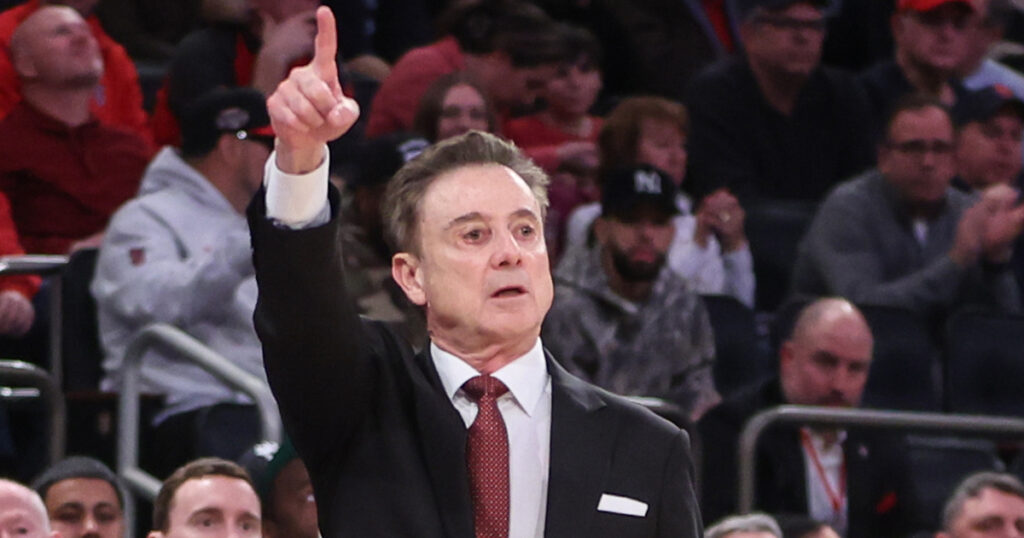
Under Rick Pitino, there is no question that St. John’s will continue to invest big in the roster, which got multiple top-end additions which promise to pay off big-time this year. How those players mesh with each other and the returning talent will set the tone.
West (San Jose)
Tampa
1 Florida (SEC) vs. 16 Colgate (Patriot)
8 Marquette vs. 9 Oklahoma
San Diego
5 Illinois vs. 12 UC Irvine (Big West)
4 Kansas vs. 13 Murray State (MVC)
Buffalo
6 Creighton vs. 11 Vanderbilt/USC
3 Iowa State vs. 14 James Madison (SBC)
Greenville
7 Indiana vs. 10 St. Mary’s
2 Auburn vs. 15 Oakland (Horizon)
1-seed Florida
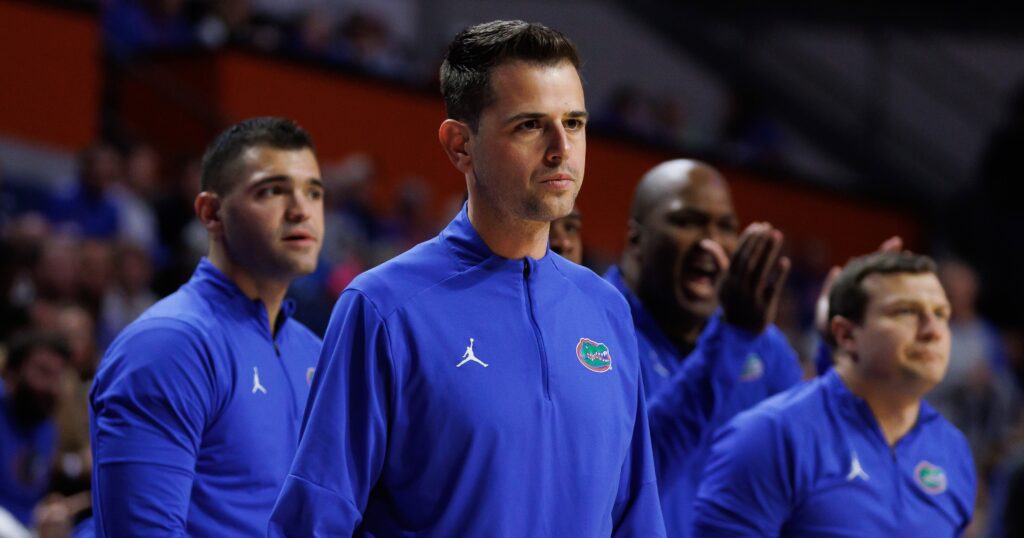
Fresh off a national championship, Todd Golden promises to get a large portion of his frontcourt back this season. While they lose a lot at guard, they restocked in the transfer portal with multiple big splashes and got depth in a pair of Top 50 recruits on the way.
2-seed Auburn
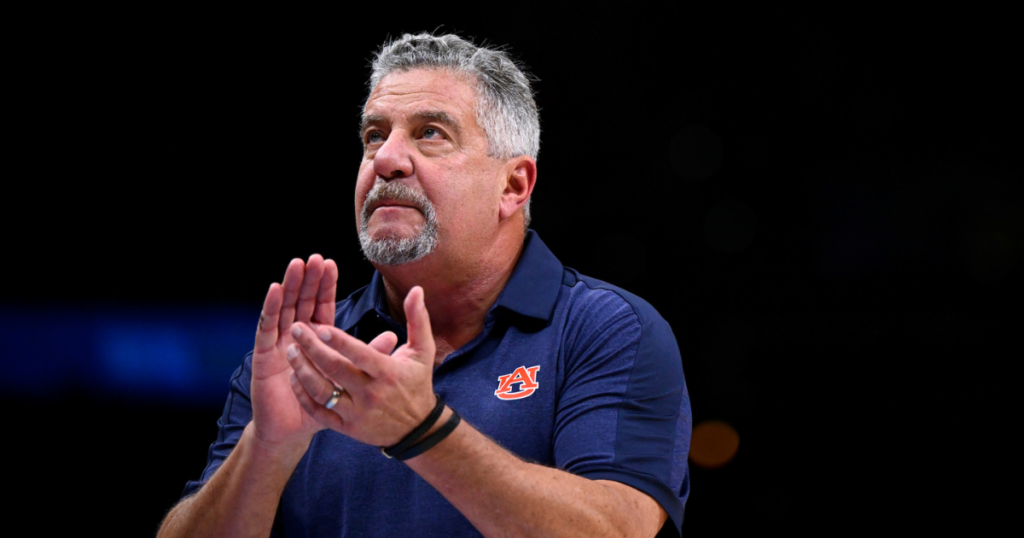
Auburn had to overhaul its veteran roster which made a deep NCAA Tournament run last season, and did so through the transfer portal. Bruce Pearl complemented some high-profile moves with a combination of Junior College players and incoming freshmen.
East (Washington DC)
Oklahoma City
1 Houston (Big 12) vs. 16 SEMO (OVC)
8 Missouri vs. 9 NC State
San Diego
5 Louisville vs. 12 Grand Canyon (WAC)
4 Texas Tech vs. 13 Charleston (CAA)
Philadelphia
6 Texas vs. 11 St. Bonaventure (A10)
3 Michigan vs. 14 Lipscomb (ASUN)
Tampa
7 North Carolina vs. 10 Oregon
2 Alabama vs. 15 North Dakota State (Summit)
1-seed Houston
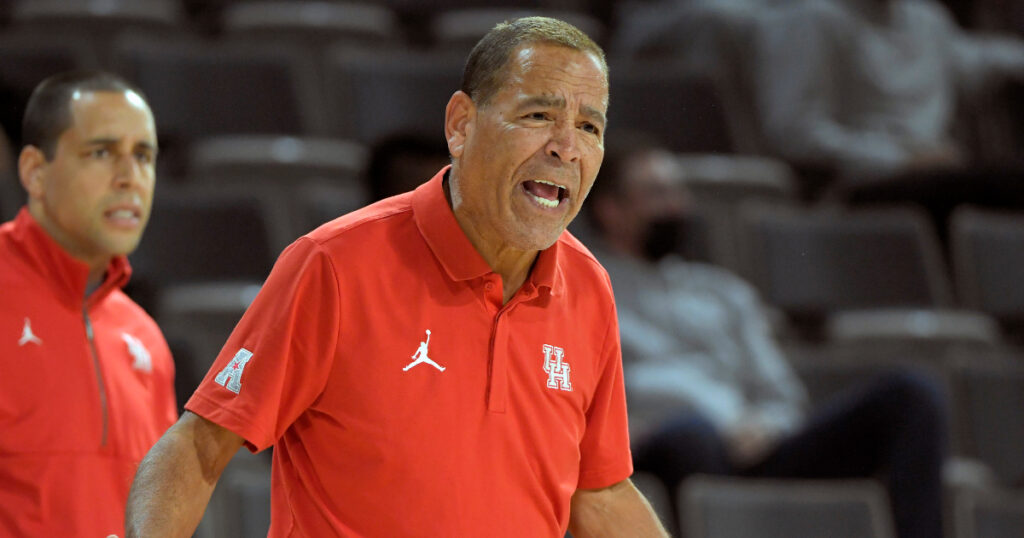
Houston brings a solid combination of retuning production and incoming talent which centers on the No. 1 recruiting class in the On3 Industry Rankings. With head coach Kelvin Sampson running the defense, the offensive upside of these players could make something special.
2-seed Alabama
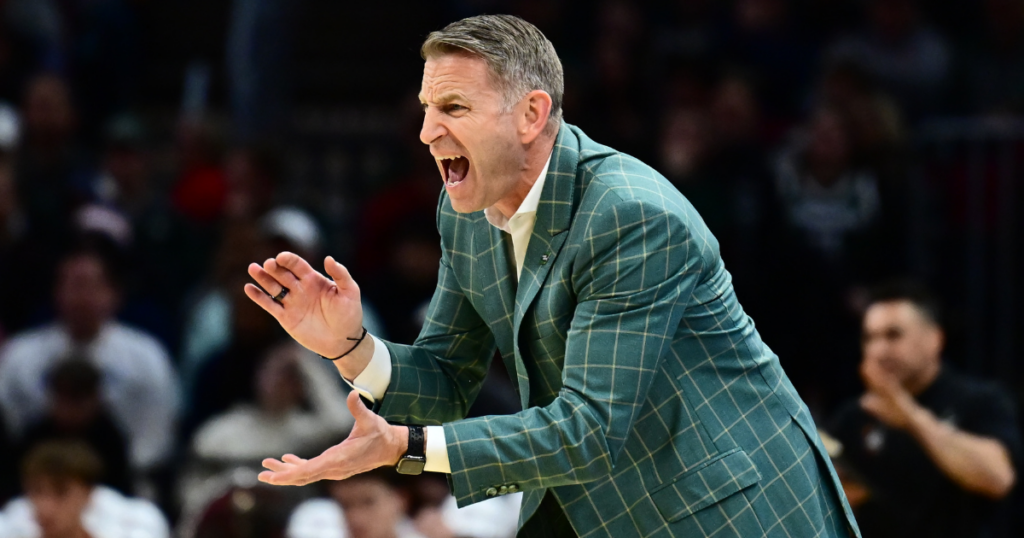
Alabama overhauls the core of its team with multiple starts aging out of college basketball, but gets a big boost with the surprise decision of Labaron Philon to return for a sophomore campaign. Under Nate Oats, a new group of transfers and highly-ranked freshmen look ready to contend again.
South (Houston)
Greenville
1 Duke (ACC) vs. 16 Norfolk State/Southern
8 SDSU (MWC) vs. 9 Mississippi State
Portland
5 BYU vs. 12 Liberty (CUSA)
4 Michigan State vs. 13 High Point (Big South)
Oklahoma City
6 Arizona vs. 11 Memphis (AAC)
3 Arkansas vs. 14 Furman (SoCon)
St. Louis
7 Baylor vs. 10 Iowa
2 Kentucky vs. 15 Northern Colorado (Big Sky)
1-seed Duke
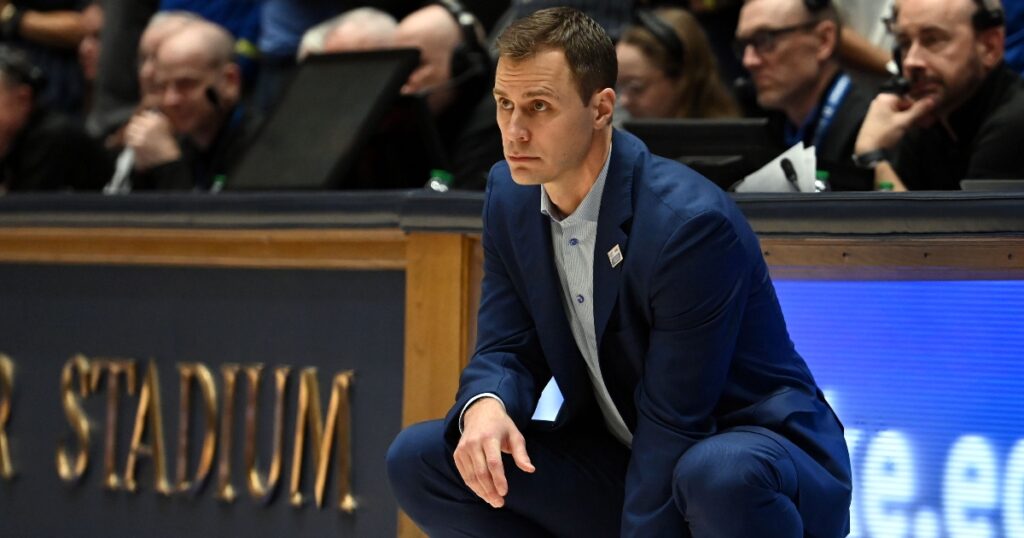
Duke has a clear plan under head coach Jon Scheyer to surround talented freshmen with a specific mold of veterans from the transfer portal. That vision is clear again with top-ranked prospects helped by returning talent and role players who bring length and defensive intensity.
2-seed Kentucky
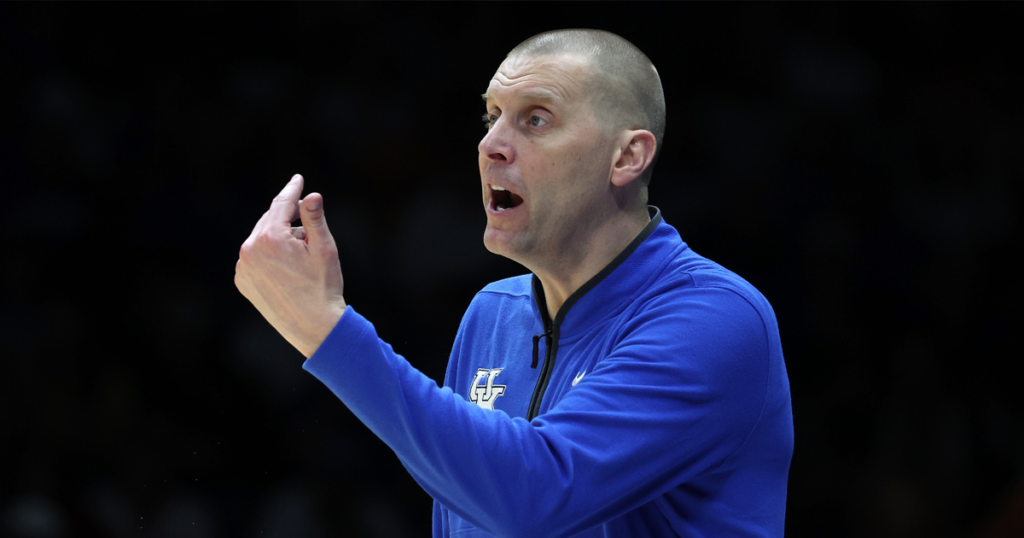
Kentucky enters Year Two under Mark Pope with high hopes that he can combine the culture of last season’s team with the influx of incoming talent. Multiple Top 50 freshmen round out a group of returning production and high-end transfer portal prospects.
NIL
‘Don’t Make Sense’ — Colorado HC Deion Sanders Provides Alternate NIL Idea Amid Inequality in College Football
Deion Sanders stood at the podium during Big 12 Media Days with a message that addressed college football’s biggest problem. The Colorado head coach wasn’t mincing words about NIL deals and the chaos they’ve created. His solution? Stop pretending the current system works and start copying what does. Dive into Try out PFSN’s FREE college […]

Deion Sanders stood at the podium during Big 12 Media Days with a message that addressed college football’s biggest problem.
The Colorado head coach wasn’t mincing words about NIL deals and the chaos they’ve created. His solution? Stop pretending the current system works and start copying what does.

Why Does Colorado HC Deion Sanders Think NIL Creates an Unfair Playing Field?
The college football landscape has shifted rapidly, largely due to the rise of NIL deals. While these opportunities benefit student-athletes, they have also deepened the divide between powerhouse programs and those with limited funding.
Wealthier schools now leverage major donor support and lucrative endorsements to secure elite talent, leaving smaller programs struggling to compete. As these major developments continue to unfold, Sanders has closely monitored them, expressing concern about the NCAA’s uncertain role in this evolving system.
Colorado head coach Deion Sanders has reemerged on the college football stage, and with him comes a renewed critique of the current state of NIL deals. Speaking at Big 12 Media Days, Sanders didn’t hold back while addressing the competitive disparity NIL has introduced into the sport.
He pointed directly at the imbalance in spending among programs and its visible impact on postseason appearances. “All you gotta do is look at the [CFP] and see what those teams spent, and you’ll understand darn well why they’re in the playoffs,” Sanders said.
His frustration was rooted not in the principle of player compensation, which he supports, but in the lack of structure guiding it. Sanders voiced concern over how programs now land recruits based primarily on NIL money rather than coaching or development.
“All you gotta do is look at the [CFP] and see what those teams spent, and you’ll understand darn well why they’re in the playoffs.”
Deion Sanders on NIL and the current state of college football. pic.twitter.com/y6A5C3dWUP
— ESPN (@espn) July 9, 2025
“You got a guy that’s not that darn good, but he could go to another school and they give him a half a million dollars and you can’t compete with that,” he said. “We’re not complaining because all these coaches up here could coach their butts off… but what’s going on right now don’t make sense.”
Sanders noted that schools with the largest donor bases are stockpiling talent, while others simply can’t keep pace financially.
“And you’re talking about equality, not equality, like equal, I guess, equality. And all you have to do is look at the playoffs and see what those teams spent, and you understand darn they’re wider in the playoffs.”
What Solution Does Sanders Propose for College Football’s NIL Problem?
Sanders has long advocated for NIL regulations and, earlier in April, proposed a clear solution: a salary cap mirroring the NFL’s structure.
“There should be some kind of cap,” he said in an interview with USA Today‘s Jarrett Bell. “Our game should emulate the NFL game in every aspect. Rules. Regulations. Whatever the NFL rules, the college rules should be the same.”
Sanders believes a structured cap would allow fairness to prevail across programs of varying size and resources. This approach would level the playing field by preventing the wealthiest programs from simply outspending their competition for top talent.
RELATED: Colorado HC Deion Sanders Takes Cheeky Jab at Texas Tech HC Joey McGuire’s Transfer Portal Activity While Praising Red Raiders
However, the current trajectory suggests his concerns are only growing. As part of a recently approved antitrust settlement in the House v. NCAA case, schools will soon be permitted to share up to $20.5 million annually with athletes. However, for Sanders, that measure falls short of addressing the core issue.
“It’s kind of hard to compete with somebody who’s given $25, $30 million to a darn freshman class,” he said, pointing out the growing gap between schools flush with cash and those without such advantages.
Sanders’ message was direct and uncompromising. Without firm guidelines, the sport risks becoming a predictable cycle dominated by the wealthiest programs. His NFL-style salary cap proposal represents a fundamental shift toward structured competition rather than the current free-for-all approach that has transformed college recruiting into a bidding war.
NIL
Deion Sanders calls for rev-share cap, points out spending among College Football Playoff teams
With the revenue-sharing era well underway in college football, coaches are evaluating the state of the landscape. Schools are now able to directly share up to $20.5 million with athletes as part of the House v. NCAA settlement. Colorado coach Deion Sanders sees a way to further settle things, though. Speaking during a roundtable at […]
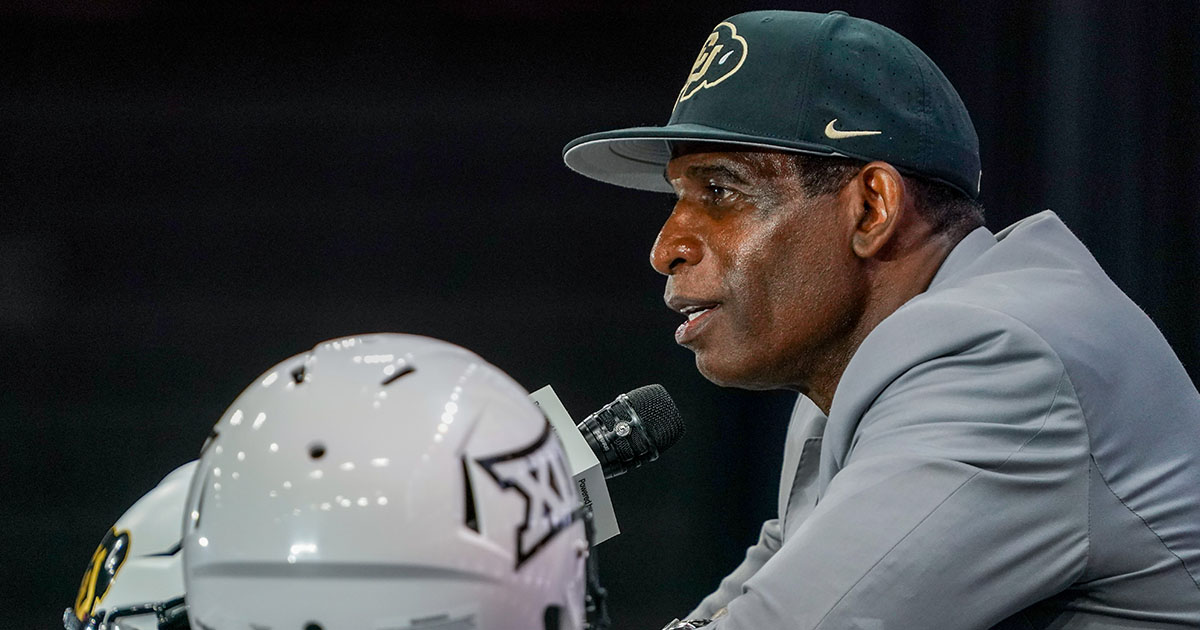
With the revenue-sharing era well underway in college football, coaches are evaluating the state of the landscape. Schools are now able to directly share up to $20.5 million with athletes as part of the House v. NCAA settlement.
Colorado coach Deion Sanders sees a way to further settle things, though. Speaking during a roundtable at Big 12 Media Days on Wednesday, Coach Prime called for a cap on rev-share dollars to shift things toward an NFL-like operation.
To illustrate his point, Sanders pointed out last year’s College Football Playoff and the conversations around roster costs. National champion Ohio State made headlines with its roster, worth upward of $20 million.
“I wish there was a cap,” Sanders said during the panel. “Like, the top-of-the-line player makes this and if you’re not that type of guy, you know you’re not going to make that. That’s what the NFL does. The problem is, you’ve got a guy that’s not that darn good, but he could go to another school and they give him another half a million dollars. You can’t compete with that. It don’t make sense.
“You talk about equality … all you have to do is look at the playoffs and see what those teams spent, and you understand darn near why they’re in the playoffs. It’s kind of hard to compete with somebody who’s giving $25, $30 million to a darn freshman class. It’s crazy.”
Ohio State’s 2024 roster was considered one of the more expensive rosters in college football last season as the Buckeyes took down Notre Dame to win the national championship. This year, though, roster costs continued to grow as teams braced for the House v. NCAA settlement.
On3’s Pete Nakos previously reported those figures soared toward $25 to $30 million on the higher end before the settlement’s approval. Once Judge Claudia Wilken issued her order, the NIL Go clearinghouse went into effect for deals worth at least $600. That led to frontloading of deals during recruitments prior to final approval.
But even with the rising costs of rosters and the ever-changing landscape, Deion Sanders said coaches still have to develop players. That said, he also reiterated what spending big money on a roster can do when the postseason comes around.
“We’re not complaining, because all these coaches up here can coach their butts off and given the right opportunity with the right players and to play here and there, you’ll be there,” Sanders said. “But what’s going on right now don’t make sense. We want to say stuff, but we’re trying to be professional.
“But you’re going to see the same teams darn near at the end, and with somebody who sneaks up in there, the team that pays the most is going to be there in the end.”
NIL
CFB revenue-sharing causing massive shift in NIL collectives, private equity money
The world of college sports has shifted more in the last few years than it has in almost its entire existence. With NIL, the transfer portal, and more popping up and changing in the blink of an eye, it can be hard to keep up with everything happening. With the most recent change, or adjustment, […]

The world of college sports has shifted more in the last few years than it has in almost its entire existence. With NIL, the transfer portal, and more popping up and changing in the blink of an eye, it can be hard to keep up with everything happening.
With the most recent change, or adjustment, the House settled with the NCAA and ruled that colleges and universities could directly pay their athletes, a virtual pay-to-play situation for college athletes.
You might be thinking, “How is that any different from the NIL collectives and funds that have been in place for the past couple of years?”
Honestly, that’s a really great question, one that even some college athletic departments are trying to grapple with as we speak. These universities built million-dollar funds through boosters, donations, NIL deals, and more.
Now, those funds are rapidly getting cut as schools no longer have to use a “workaround” to get their players the most amount of money possible. Yet another shift in college sports.
The NIL Go Clearinghouse was created within the House settlement as a virtual vetting system for various NIL deals that continue to pop up, even with programs directly paying athletes, and is run by the brand-new College Sports Commission.
Beyond NIL deals and getting a paycheck signed over to them by their teams, college athletes now have a big question surrounding them:
“Is it possible for private equity funds to pay collegiate athletes without crossing any of the House settlement lines?
For now, the answer is still unknown. Colleges are having to look between the lines to ensure that they aren’t walking themselves or their players into a sticky situation, mainly because this has never been a situation before.
Currently, the Texas Tech Red Raiders are the frontrunners in the learning curve, already writing a three-year $5.1 million check over to five-star offensive tackle Felix Ojo, and preparing to write an even bigger one to land LaDamion Guyton, the No. 1 prospect in the class of 2027.
To put it simply, most questions you’re possibly asking are being asked by everyone else, including the bigwigs in the NCAA and athletic departments. Most of the answers to those questions are still unknown, and may be for quite a while.
NIL
Jayden Anderson Enters The Transfer Portal
Virginia Tech true freshman wide receiver Jayden Anderson has entered the transfer portal. The news was first reported by On3. Anderson signed with the Hokies out of Green Run High School (Virginia Beach) last December, and he enrolled at Virginia Tech this summer. The slot receiver prospect was the No. 20 prospect in Virginia by […]

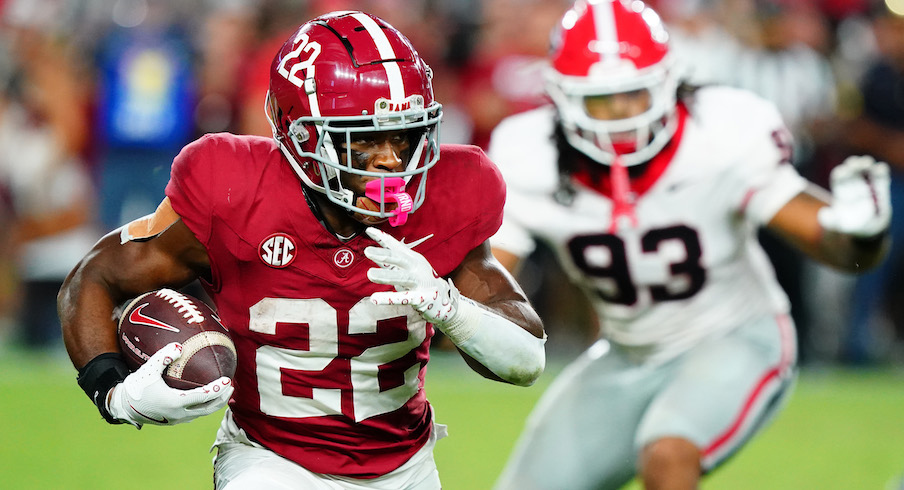
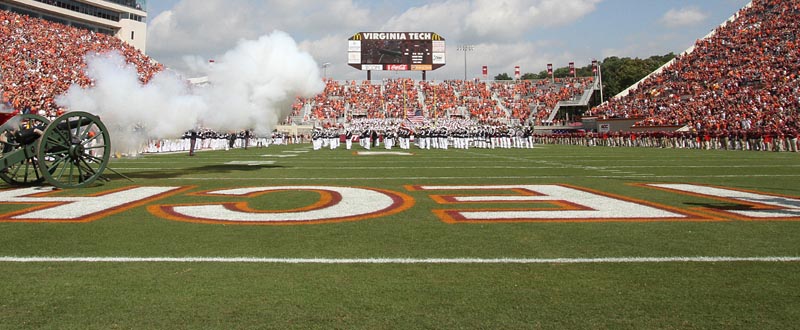
Virginia Tech true freshman wide receiver Jayden Anderson has entered the transfer portal. The news was first reported by On3.
Anderson signed with the Hokies out of Green Run High School (Virginia Beach) last December, and he enrolled at Virginia Tech this summer. The slot receiver prospect was the No. 20 prospect in Virginia by the 247Sports composite rankings, and he was expected to redshirt his season.
Anderson’s departure leaves the Hokies with 95 scholarship players, including 12 wide receivers.
NIL
NIL Spending Influences College Football Playoff, Says Deion Sanders
During Big 12 Media Days, Colorado head coach Deion Sanders made headlines with his staunch critique of the current NIL landscape in college football. He expressed concerns that the unregulated spending on athletes creates an imbalance, favoring wealthier programs. Sanders argued that the teams with the biggest financial resources, not necessarily the best coaching or […]

During Big 12 Media Days, Colorado head coach Deion Sanders made headlines with his staunch critique of the current NIL landscape in college football. He expressed concerns that the unregulated spending on athletes creates an imbalance, favoring wealthier programs. Sanders argued that the teams with the biggest financial resources, not necessarily the best coaching or player development, dominate the College Football Playoff. He noted that programs are investing exorbitantly into recruiting, leading to a competitive hierarchy rooted in financial backing rather than merit. His comments highlight the pressing need for a structured approach to NIL compensation in college sports.
By the Numbers
- Some programs are reportedly offering 25–30 million for a single freshman recruiting class.
- Sanders’ Colorado Buffaloes finished last season with a record of 9-4, including a bowl loss to BYU.
State of Play
- Various college football programs are engaging in a financial arms race to attract top talent.
- Sanders’ comments reflect a growing concern among coaches and players about the influence of money in recruiting.
What’s Next
As the dialogue around NIL spending intensifies, it could prompt discussions among NCAA leadership regarding potential regulations or caps on compensation. This tension may lead programs to either invest more heavily in recruiting or advocate for more equitable compensation structures. The outcome could redefine competitive balance and strategy in college football.
Bottom Line
Deion Sanders’ remarks underscore a critical crossroads for college football, where financial power is eclipsing traditional values of skill and teamwork. His call for regulations highlights an urgent need for reform to ensure that competition remains fair and based on athletic ability rather than budget size. The future of college sports hangs in the balance as stakeholders weigh the implications of endless NIL spending.
NIL
John Calipari heads into his second season at Arkansas trying to balance old and new
FAYETTEVILLE, Ark. — John Calipari admits he is still navigating the “new” college basketball, a world in which the 66-year-old’s traditional recruiting style is no longer the norm. But Calipari made it work last season, his first with the Razorbacks, and proved naysayers wrong. But the Arkansas basketball coach isn’t interested in doing things the […]
FAYETTEVILLE, Ark. — John Calipari admits he is still navigating the “new” college basketball, a world in which the 66-year-old’s traditional recruiting style is no longer the norm.
But Calipari made it work last season, his first with the Razorbacks, and proved naysayers wrong. But the Arkansas basketball coach isn’t interested in doing things the same way moving forward.
Calipari spoke about his first year at Arkansas on Wednesday.
The Razorbacks started Southeastern Conference play last season with five straight losses. But Arkansas ultimately reached the Sweet 16. Now, Calipari has taken a different approach in rebuilding the Razorbacks’ roster heading into his second year in Fayetteville.
“I came here saying I want eight or nine guys because of NIL (name, image, likeness). I can’t pick 12,” Calipari said. “Now I’m like ‘Let’s have eight or nine that know,’ but you have other players we’re developing.”
Calipari has long been known as a master recruiter of high school players, regularly collecting top-10 classes at Kentucky and Memphis before that.
Now, the transfer portal has changed things. High school recruiting is not irrelevant, but preps players aren’t as big a focus. Now, it’s about veterans with college experience.
Arkansas had one returning player last season, forward Trevon Brazile, who is also back for his final season. Calipari built the rest of the roster and used a nine-player rotation. The other five team members played 23 minutes total.
Injuries sapped the Razorbacks of their two leading scorers. Guard Boogie Fland, who has transferred to Florida, played in 21 games, and forward Adou Thiero, who was selected in the NBA draft, played in 26. The two played less than 10 minutes in Arkansas’ season-ending loss to Texas Tech in the NCAA Tournament. Also gone are center Jonas Aidoo, forward Zvonimir Ivisic and guard Johnell Davis.
Now, the Razorbacks have two 6-foot-10 transfers in Nick Pringle from Alabama and Malique Ewin from Florida State. And there are three perimeter freshmen. Guards Meleek Thomas and Darius Acuff Jr. were five-star recruits, and wing Isaiah Sealy ranked as a four-star.
On Wednesday, Calipari had practically a full contingent to run through 5-on-5 work, which rarely happened last season.
“Last year, we were always together, but as injuries started peeling off guys, they understood how much they needed each other. The way this is, you probably need to play more people,” Calipari said.
Arkansas reached the Sweet 16 for the fourth time in five years after entering the NCAA Tournament as a No. 10 seed and starting SEC play at 1-5 for the third straight season. That start came as the least experienced team in the league, Calipari said.
This season, Arkansas returns the most production in the SEC, increasing expectations and stakes.
“It’s only 45%, but it’s still the most in our league,” Calipari said.
DJ Wagner is the only returner who averaged double figure scoring. Karter Knox tested the NBA waters before returning, and Billy Richmond saw plenty of key minutes. There is also Brazile, once considered a possible first round NBA pick before a torn ACL three seasons ago. In his final seven games last season, Brazile averaged 12.6 points and 9.7 rebounds.
“I’d tell you he (Brazile) is playing the best ball since I’ve coached him,” Calipari said. “If he’s the guy I’m seeing, you’re talking about someone that we have one or two like that, then this thing is on. He’s that good. Now you’ve got to find out who are the other couple that can make differences in the game.”
Arkansas’ mix of young and old looks familiar to Calipari — and anyone who saw his teams at Kentucky. Whether or not the new-old approach to roster building comes to fruition, even Calipari is unsure.
“None of us know,” he said. “We’re trying to figure out how this is going to work.”
-

 Technology2 weeks ago
Technology2 weeks agoPet fitness and wellness trends for a healthier and happier dog
-

 College Sports2 weeks ago
College Sports2 weeks agoWAC to Rebrand to UAC, Add Five New Members in 2026
-
College Sports3 weeks ago
Women's Basketball Thanks Shannon LeBeauf for 14 Seasons
-

 Motorsports1 week ago
Motorsports1 week agoWhy Cosmetics are Making Up for Lost Time in Women’s Sports
-

 Professional Sports3 weeks ago
Professional Sports3 weeks agoAlex Pereira responds to rumors of UFC heavyweight title fight with threatening message
-

 College Sports3 weeks ago
College Sports3 weeks agoAlabama Basketball
-

 Professional Sports3 weeks ago
Professional Sports3 weeks agoFrancis Ngannou sends Dana White a message following Jon Jones' shock UFC retirement
-

 College Sports2 weeks ago
College Sports2 weeks agoA new era of Dickinson hockey begins behind the bench – The Dickinson Press
-

 Motorsports2 weeks ago
Motorsports2 weeks agoNASCAR This Week – Patriot Publishing LLC
-

 Sports2 weeks ago
Sports2 weeks agoSEC Conference imposing a fine will create the opposite effect.







 | #Shorts
| #Shorts






 – Bobby Marks breaks down Bucks’ finances waiving Damian Lillard | Get Up
– Bobby Marks breaks down Bucks’ finances waiving Damian Lillard | Get Up
















